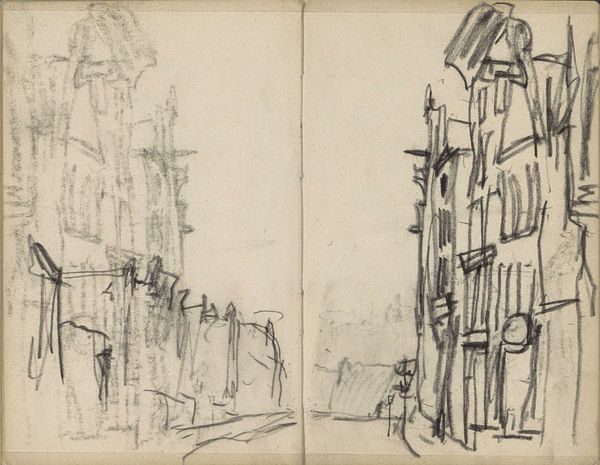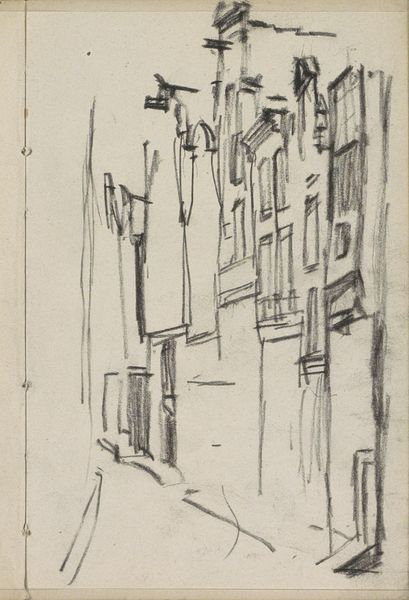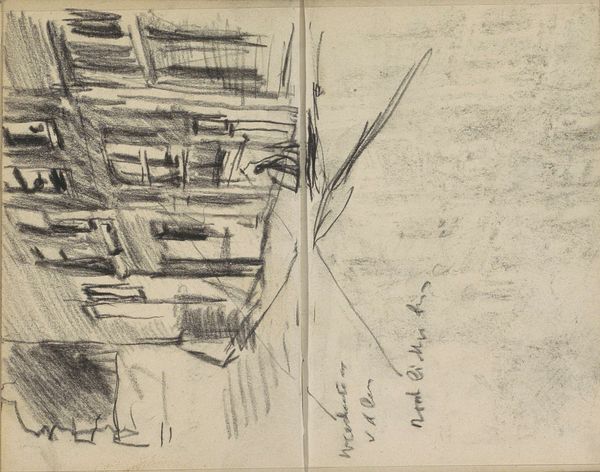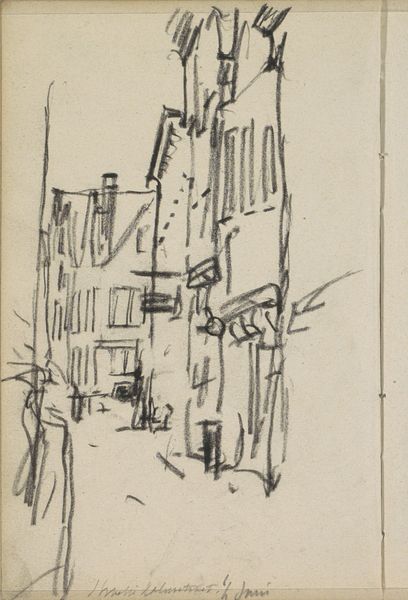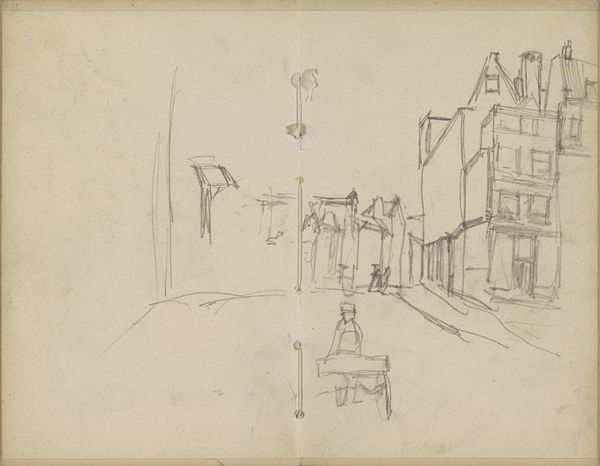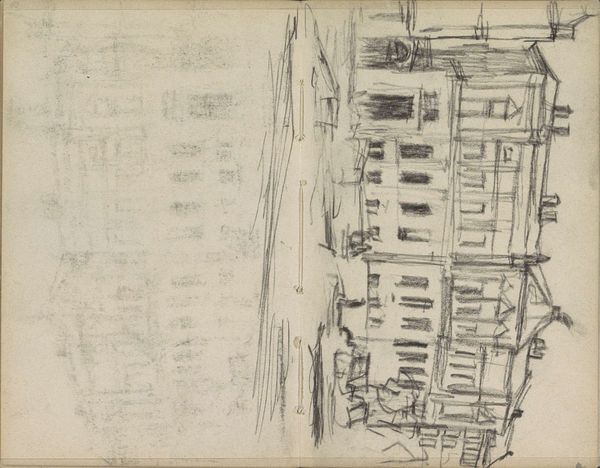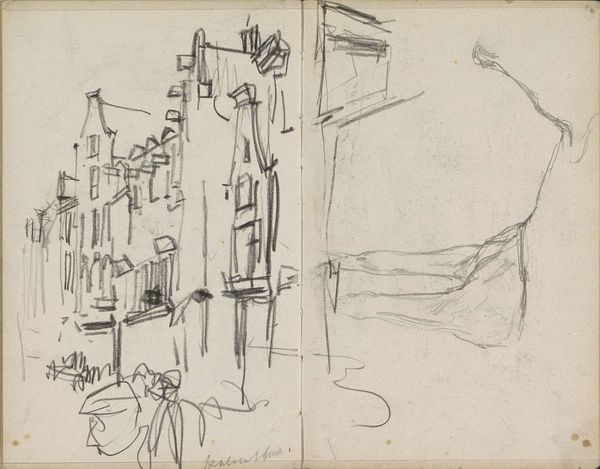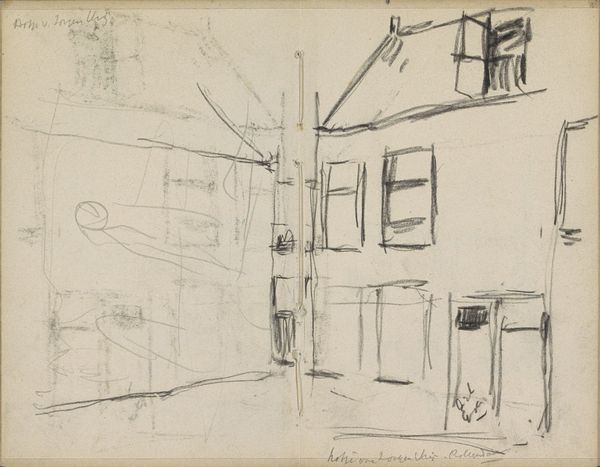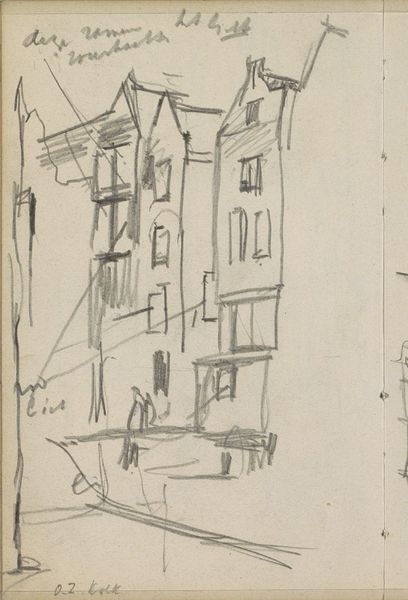
Copyright: Rijks Museum: Open Domain
Editor: So, here we have George Hendrik Breitner’s 1907 pencil drawing, "Kapelsteeg in Amsterdam, Seen from the Rokin." The quick, almost scratchy lines give it a real sense of immediacy, like a snapshot in time. What jumps out at you? Curator: Immediately, I’m drawn to the directness of the marks. Consider the cheapness of paper and pencil, everyday tools. Breitner elevates them by capturing the industrial transformation reshaping Amsterdam. See how he prioritizes recording a slice of urban life, foregoing traditionally valued artistic materials like oil paints? It challenges the hierarchy of art itself, no? Editor: That's interesting! I wouldn't have thought about the choice of materials as making that statement. So, you see the drawing as a commentary on labor, or more generally on the impact of modernization? Curator: Exactly! The hasty sketch hints at a quickly built environment, meant for transient lives. This area would have been crowded, teeming with labor and commerce. Ask yourself, who would've been buying art depicting this street, made with such utilitarian tools, and what did this choice of material and subject represent? Was he glorifying everyday work or maybe subtly criticizing urban development, perhaps its alienation? The method reflects the rapidly changing world. Editor: I see what you mean. Breitner isn’t just drawing a street; he’s capturing a moment of intense societal and industrial change using the materials of that era. It's like the medium and the subject are one. Curator: Precisely. We are considering the means of production. How do the materials shape and inform the context? Now, how might this inform our understanding of Impressionism, knowing that it isn't *just* about aesthetics, but about reflecting labor itself? Editor: This changes how I will look at drawings now, thinking of it not just as art, but as a visual artifact deeply embedded in its socio-economic context. Curator: Right! We've shifted our gaze to how materials speak volumes, revealing the labor and social fabric woven into the art itself.
Comments
No comments
Be the first to comment and join the conversation on the ultimate creative platform.


